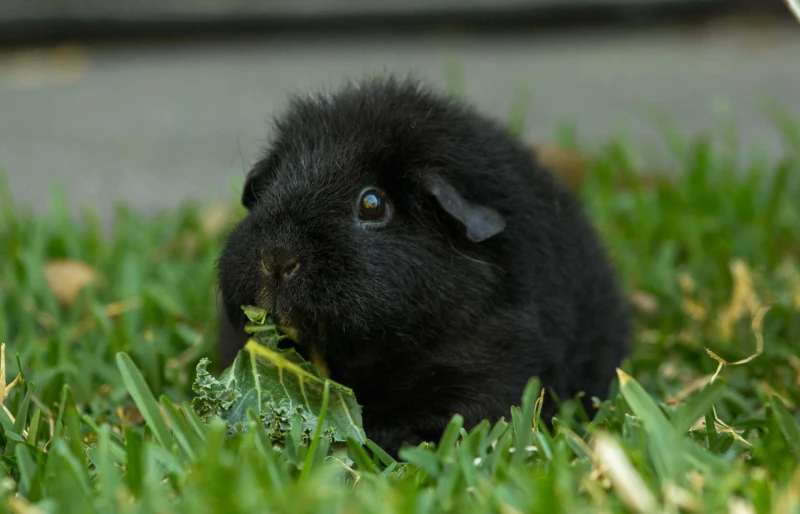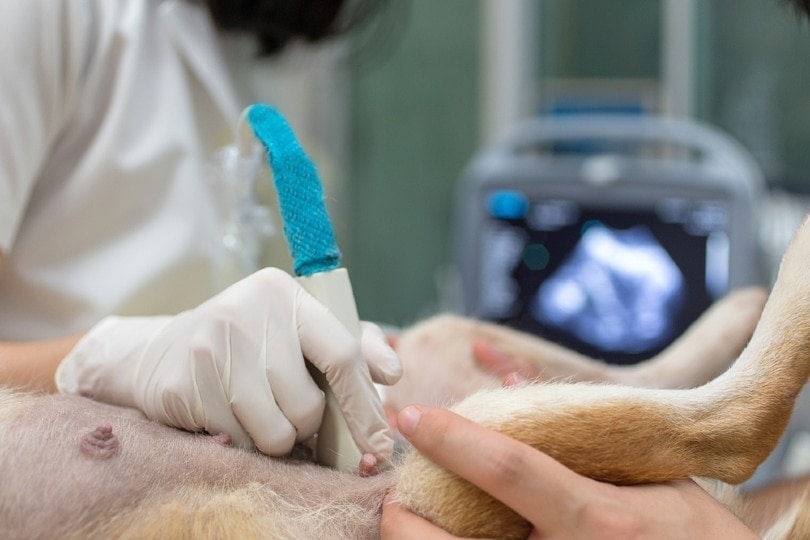Bully Whippet Syndrome: Double Muscling Explained (Vet Answer)
Updated on

Click to Skip Ahead
Whippets are a medium-sized sighthound racing dog breed. They look very similar to a greyhound, just smaller in stature. This breed, like other sighthounds, runs very lean as the normal and competes in short sprint races (unlike greyhounds which run longer distances).
Though strong and fast, these dogs usually have thin bodies with minimal bulky muscle mass, but have you ever seen one that looks like it could squat a greyhound a hundred times over? Or pull a semi-truck across a field and never skip a gym lift day ever?
This may sound ridiculous, but there’s an established phenomenon within the Whippet breed in which they may be born with significantly more muscle mass than usual, so-called “double muscling”. The details on how and why this happens are fascinating, as is the possible history behind the development of this change in the breed.
What Is Bully Whippet Syndrome?
Bully Whippet Syndrome is a recessive gene mutation that causes muscle hypertrophy in affected dogs. What that means is that for a dog to fully express this gene mutation to be fully affected, they must inherit the gene mutation from both of their parents. In the case of Bully Whippets, this gene mutation causes excessive muscle growth throughout the body.
Whippets are bred to have a lean muscle mass, but Bully Whippets will resemble Bully breeds with thick, large muscles, making the dogs nearly unrecognizable as Whippets other than by their small heads.
What Are the Signs of Bully Whippet Syndrome?
Bully Whippets have abnormally thick, chunky muscles all over their body. The only visible sign of a Bully Whippet is their significant muscle mass, though studies have been done that show a link between racing speed and possession of one or both copies of this mutation in Whippets, meaning that highly successful racers may be showing signs of the mutation too.
What Is the Cause of Bully Whippet Syndrome?
The affected gene in Bully Whippets is the myostatin gene, “myo” meaning muscle. The myostatin gene works to control muscle growth. Bully Whippets have a mutation in which the exact marker for this gene has been nullified in both copies of the gene, from both parents, leading to uncontrolled muscle growth.
In Whippets that only inherited one copy of the mutation—meaning only one parent carried and passed it on, they tend to still have increased muscle mass, just not as profound as Bully Whippets with the mutation twice over and it isn’t always visibly noticeable.
To recap, this means that a Whippet may have two copies of a normal myostatin gene, which controls their muscle growth like normal, one normal copy and one mutated copy, which leads to slight muscle mass increases and likely faster running and racing speeds with minimal visible changes, or two mutated copies, in which there is significant loss of control of muscle growth, leading to over large, bulky muscles and fast running speeds, and these dogs are known as Bully Whippets.

Why Are There Only Bully Whippets, Not Other Breeds?
Interestingly, researchers suspect that this is the first case of accidentally selecting this gene mutation. It is known to be present in meat production animals such as cows and sheep, and these animals may be bred for the presence of the mutation on purpose since that increases meat production. In Whippets, since the presence of the mutation is linked with faster racing speeds, it appears these dogs were being preferentially bred based on racing career successes without realizing that they were often preferentially selected for Whippets containing the gene mutation.
Researchers have looked unsuccessfully for evidence of this mutation in other breeds. Several Bully breeds have been checked, the thought being that this mutation may be responsible for their large muscle mass, but no cases were found. Greyhounds are also very similar to Whippets genetically, and they share a common ancestor, so they have been screened, but the mutation hasn’t been found in Greyhounds either.
How Is Bully Whippet Syndrome Diagnosed?
Diagnosis is based on a combination of genetic testing and visual identification. Since Bully Whippets are obviously different from their counterparts without the mutation, the presence of the characteristic muscle mass is enough for diagnosis.
Genetic testing helps with confirmation but also identifies Whippets that are only carrying one copy of the mutation rather than two.
How Is Bully Whippet Syndrome Treated?
There is no treatment for Bully Whippet Syndrome (besides prevention), but in most cases, treatment is also not required. These dogs generally live mostly normal lives otherwise. There seems to be a link between heart and organ disease because their organs are normal sizes (or potentially smaller), but the muscles are larger, straining organs like the heart that still need to move blood through this larger-than-normal mass. Dogs negatively affected in this way may need regular bloodwork screenings, X-rays, ultrasounds, CT scans, MRIs, and medication or diet changes that best support any strained organs.

Is Bully Whippet Syndrome Preventable?
Bully Whippet Syndrome is preventable via responsible breeding programs. All Whippets should undergo genetic testing for the mutation before being bred, and if they are a carrier, they should not be bred, especially to another carrier. These tests are available commercially or through a veterinarian.
How Do I Care for a Whippet With Bully Whippet Syndrome?
Most of these dogs will live otherwise normal lives with no noted changes in personality, behavior, or proven health links. It is best to make sure these dogs are not bred and that they receive annual veterinary care like other dogs.
Screening lab work may be more important in these dogs, and maintaining savings for veterinary care for these dogs if the need arises is recommended. Health insurance is worth looking into, but the presence of the gene mutation may bar some of these dogs from coverage for related health issues with some insurances.
 Frequently Asked Questions
Frequently Asked Questions
How long do Bully Whippets live for?
The average lifespan on a Whippet is about 12–15 years. While chronic stress on a Bully Whippet’s organs means we suspect they often die prematurely, conclusive data on this has not been collected.
Are Bully Whippets mean?
While we may joke that these dogs appear ramped up based on their muscle mass, this mutation does not affect their personality. They will be no more aggressive, hyper, or active than they normally would have been.
Is Bully Whippet Syndrome painful?
Bully Whippets do not appear to be more uncomfortable than other Whippets; as far as we can tell, they move around and behave normally.

 Conclusion
Conclusion
Bully Whippets appear drastically different from other Whippets, but besides their large muscles, they are very much the same otherwise. These dogs can make great house pets and seem to live normal lives. Research about the condition is ongoing, with findings like the exact gene affected being found relatively recently.
If you suspect you have a Whippet that possesses one or both copies of this myostatin gene mutation, you can purchase genetic testing for your dog and should check in with your veterinary team about your suspicions.
Featured Image Credit: nik174, Shutterstock














